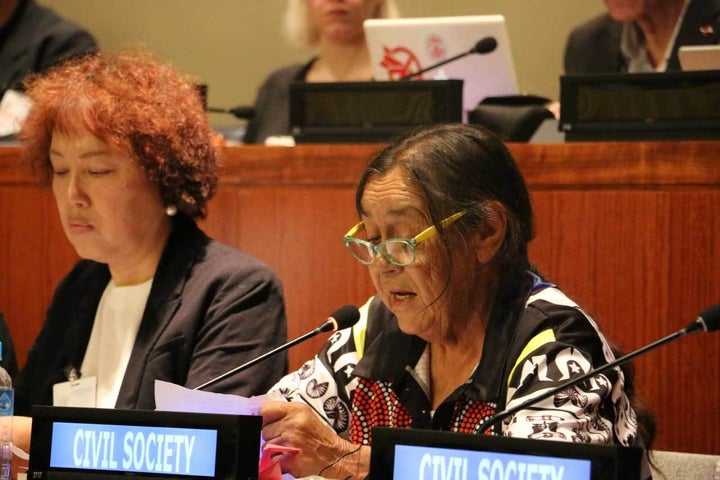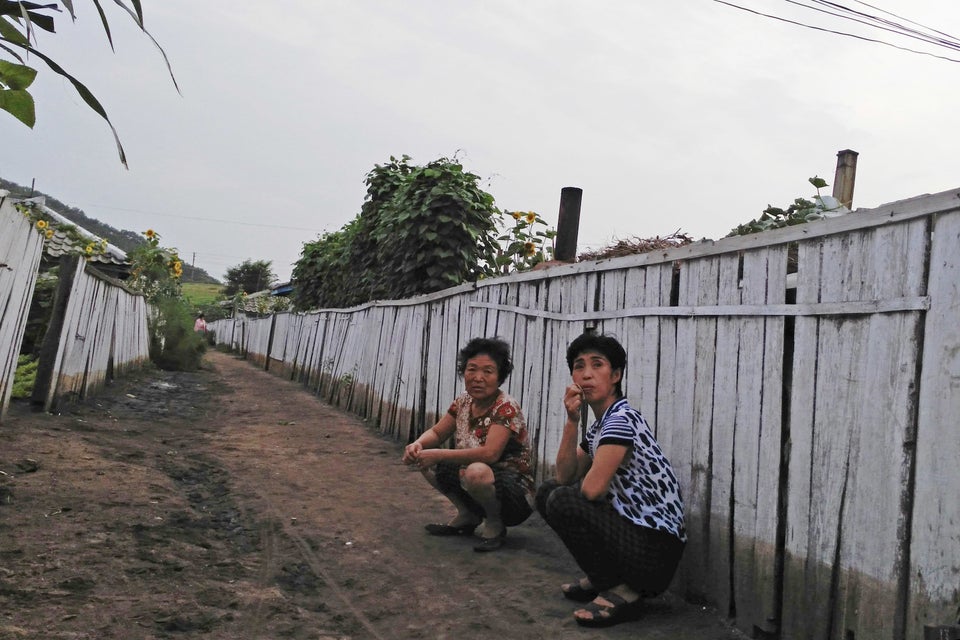
Sue Coleman-Haseldine shares her experiences as a survivor of nuclear weapons testing in Australia.
By Ariel Conn
To imagine innocence is to picture children playing. As such, most people and governments are horrified by the idea of children and other helpless civilians suffering and dying, even during war. Finding a way to prevent the unnecessary slaughter of innocents has brought over 115 countries to the United Nations in New York this week to begin negotiations of a historic treaty that would, once and for all, ban nuclear weapons.
The countries are united by concerns that tens or even hundreds of thousands of innocent men, women and children – mothers, sons, fathers, daughters, aunts, uncles, cousins, friends and neighbors – could be killed, quite literally, in a flash.
In a statement to the opening of negotiations, Peter Maurer, president of the International Committee of the Red Cross, or ICRC, said, “The prohibition and elimination of nuclear weapons is a humanitarian imperative.”
Responding to a Humanitarian Imperative
A ban on nuclear weapons is certainly historic, but it’s not without precedence. Prohibiting and eliminating other weapons because of their horrific humanitarian consequences has happened before. In fact, most of the world’s deadliest weapons are currently banned.
At a press conference, Beatrice Fihn, executive director of the International Campaign to Abolish Nuclear Weapons, ICAN, said, “The treaty will finally ban weapons designed to indiscriminately kill civilians, completing the prohibitions on weapons of mass destruction.”
For example, when adults around the world learned of the tens of thousands of children killed by landmines while simply pursuing childhood activities, such as playing in open fields, a global cry arose to bring an end to the indiscriminate weapons. In 1997, 133 countries signed the Mine Ban Treaty, and as of today 162 have signed. According to the International Campaign to Ban Landmines, “only 35 states remain outside the treaty, but most of them do not actually use or produce antipersonnel mines.”
A similar rallying cry heralded the Convention on Cluster Munitions. Cluster munitions often landed without exploding and remained unstable. Their toy-like appearance attracted thousands of children, who were killed and maimed by the weapons. The treaty was adopted in 2008 and is described by clusterconvention.org as an “international treaty of more than 100 States that addresses the humanitarian consequences and unacceptable harm caused to civilians by cluster munitions.”
Today, most countries abide by these treaties, and even countries like the United States, which has not signed either treaty, is either mostly in compliance or is showing signs of improvement.
A Nuclear Rallying Cry
Not surprisingly, the horror of the effect nuclear bombs have on children provides some of the most compelling arguments for a ban treaty.
Fujimori Toshiki, a Hibakusha (survivor of the bombs dropped on Japan), described his personal experience to the General Assembly at the very start of the negotiations. He was a baby at the time, and he and his mother were just far enough away from the blast that a two-story home protected them somewhat.
“I had my entire body covered with bandages,” said Toshiki, “with only eyes, nose, and mouth uncovered. Everybody thought I would die over time. Yet, I survived. It is a miracle. I am here at the U.N., asking for an abolition of nuclear weapons. I am convinced that this is a mission I am given as a survivor of the atomic bomb.”
His 13-year-old sister was not so lucky. She was one of 6,300 teenagers to die near the blast site because their schools had sent them there to help “create firesafe [sic] areas against air raids.”
Toshiki added, “Every year, on Aug. 6, my mother would gather all of us children and would talk to us about her experience in tears. I once asked my mother why she would speak about it if recalling the experience makes her suffer. ‘I can’t make you go through the same experience.’ That was her answer. Her tears were her heartfelt appeal. She called, as a mother, for a world with no more hell on earth.”
Setsuko Thurlow, another Hibakusha, was also 13 when the bombs fell. She described witnessing the slow death of her 4-year-old nephew Eiji. He was “transformed into a charred, blackened and swollen child who kept asking in a faint voice for water until he died in agony.”
Thurlow continued, “Regardless of the passage of time, he remains in my memory as a 4-year-old child who came to represent all the innocent children of the world. And it is this death of innocents that has been the driving force for me to continue my struggle against the ultimate evil of nuclear weapons.”
However, unlike the stories of landmines and cluster munitions, which told of present-day children suffering and dying, these stories are over 70 years old. It can be difficult to relate to events that happened so long ago and that most people believe has not ― and cannot ― be repeated.
But Sue Coleman-Haseldine told the assembly of stories and concerns that were more recent. Coleman-Haseldine is an Aboriginal who lived near the atomic weapons testing sites in Australia. She was two when the testing first began in the 1950s.
“Our district is full of cancer now,” she said.
She continued, “I grew up hearing about the bombs, but I didn’t know about how the sickness went through the generations. When mining companies started eyeing off areas of my country I started to look more into it and I went to an Australian Nuclear Free Alliance meeting to learn more about fighting mining companies but also radiation fallout. What I learnt devastated me. To find out that our bush foods were possibly contaminated was a real blow to me.”
“I am a mother, grandmother and great grandmother,” she added. “My third great grandson was born just recently. And now I am here, speaking about the past [and] present day problems and what we want for the future. I’m fighting for all my grandchildren and all the children of the world.”
Relegating Nukes to History
A common concern about these negotiations is the notable absence of the nuclear states. However, history, as seen with the landmine and cluster munitions treaties, gives those supporting the negotiations reason to hope.
In his statement for the ICRC, Maurer added, “Of course, adopting a treaty to prohibit nuclear weapons will not make them immediately disappear. But it will reinforce the stigma against their use, support commitments to nuclear risk reduction, and be a disincentive for proliferation. … As with chemical and biological weapons, a clear and unambiguous prohibition is the cornerstone of their elimination.”
Susi Snyder, the nuclear disarmament program manager for PAX in the Netherlands, explained, “This is the start of a negotiation. The impact of the negotiation cannot be guessed or measured until the treaty is done. Even then, as with all treaties and growing norms, the impact will grow over time.”
Fihn added that a treaty would “make it clear that the world has moved beyond these morally unacceptable weapons of the past.”

